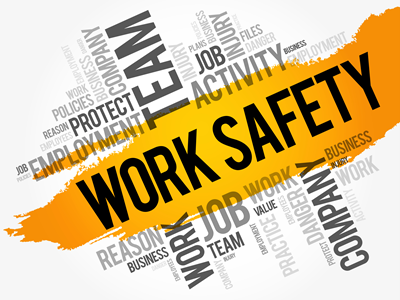March 06,2023
What is Working at height as per Indian factories act 1948?

What is Working at height
as per Indian factories act 1948?
- The Indian
Factories Act, 1948 regulates the safety of workers employed in factories,
including those working at height. The act defines "working at
height" as working at any place where, if precautions are not taken, a
person is liable to fall more than two meters.
- According to the act, employers must take necessary measures to ensure the safety of workers who work at height. This includes providing appropriate safety equipment such as safety harnesses, safety belts, safety nets, and guardrails. Employers must also ensure that workers are trained in the proper use of safety equipment and are aware of the hazards associated with working at height.
- In addition to
safety equipment, employers must also take measures to prevent falls from
height. This can include providing safe access to elevated work areas, ensuring
that work platforms are stable and secure, and conducting regular inspections
of equipment and work areas.
- Employers must
also appoint a competent person to supervise work at height and ensure that
safety measures are being followed. Workers must also be provided with adequate
rest periods to avoid fatigue and must not be required to work at height during
adverse weather conditions.
- In summary,
working at height is regulated under the Indian Factories Act, 1948, and
employers have a responsibility to ensure the safety of workers who work at
height. This includes providing appropriate safety equipment, taking measures
to prevent falls from height, and appointing a competent person to supervise
work at height.
As per the Indian Factories Act, 1948, working at
height safety precautions are as follows:
- Provision of
secure working platforms: The employer should provide suitable and secure
working platforms for any work carried out at a height.
- Provision of
guardrails and toe-boards: Guardrails and toe-boards should be installed on all
working platforms to prevent falls.
- Provision of
safety harnesses: Where guardrails and toe-boards are not practical or
effective, safety harnesses should be provided for workers to prevent falls.
- Inspection and
maintenance of equipment: All equipment used for working at height should be
inspected and maintained regularly to ensure that it is safe to use.
- Training and
supervision: All workers who carry out work at height should be properly
trained and supervised to ensure that they understand the risks and how to work
safely.
- Warning signs: Warning signs should be placed at the base of any working platform to warn others of the potential danger.
- Use of personal
protective equipment (PPE): Workers should be provided with appropriate PPE,
such as helmets and safety shoes, to protect them from injury.
- Limitation of
working hours: The employer should limit the hours of work for workers who work
at heights to reduce the risk of accidents caused by fatigue.
- Emergency
response plan: An emergency response plan should be in place in case of
accidents or emergencies involving workers working at heights.
- Overall, the
safety of workers working at heights should be given top priority and all
necessary precautions should be taken to prevent accidents and injuries.




